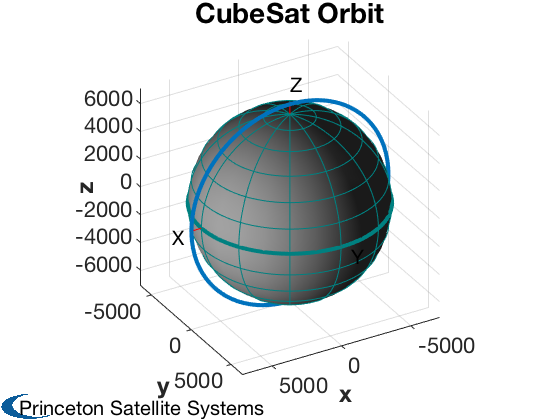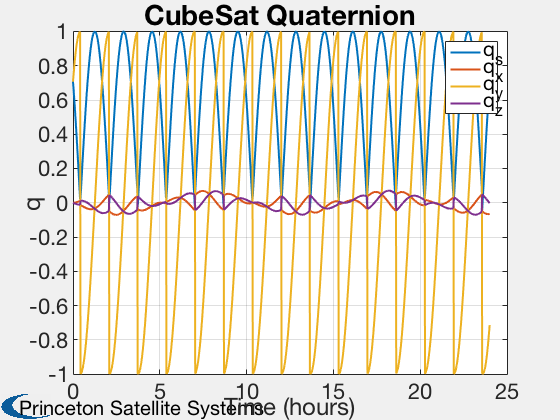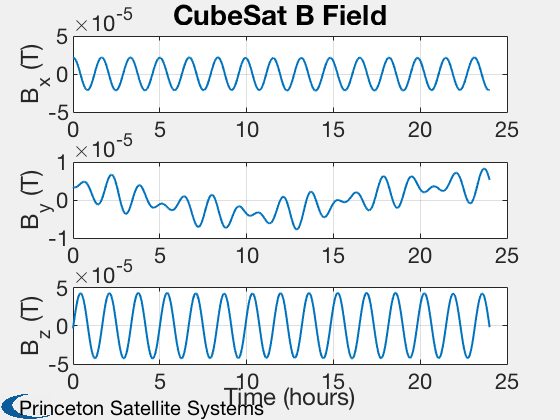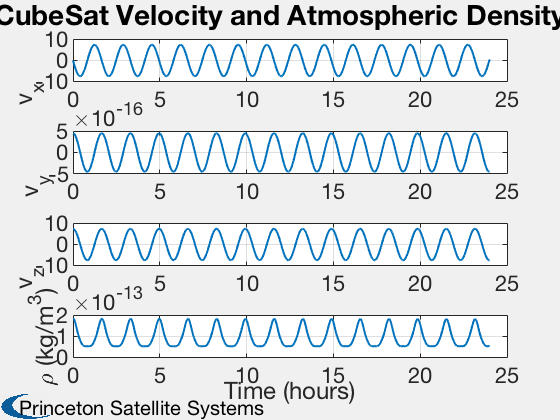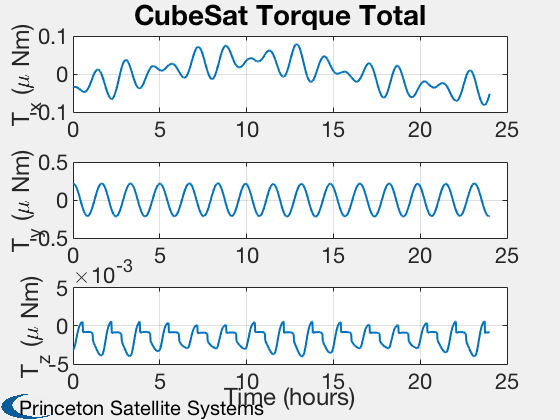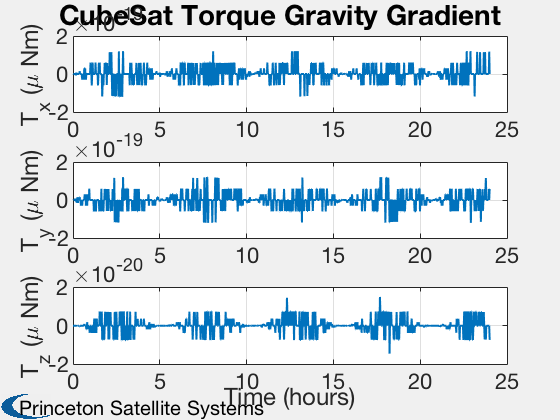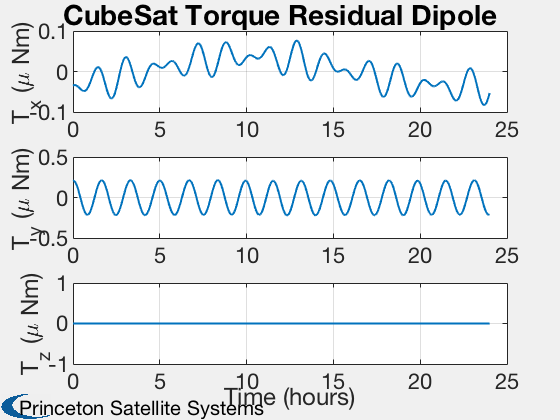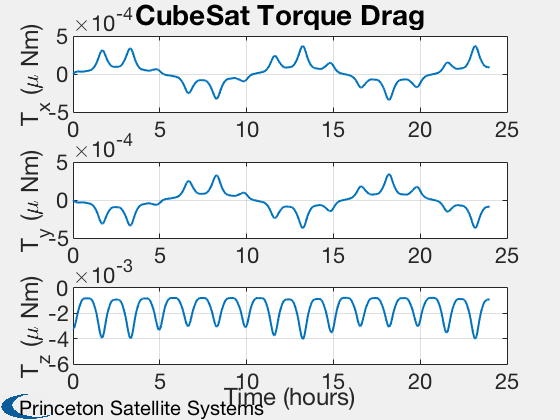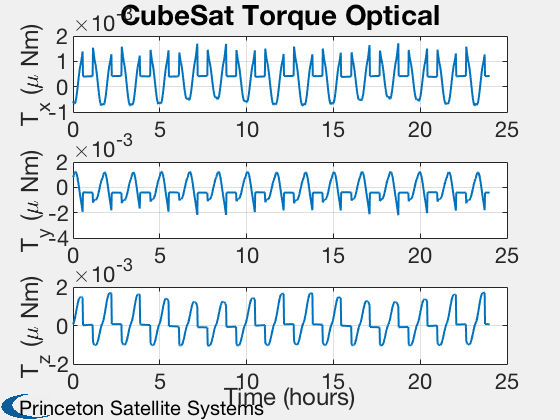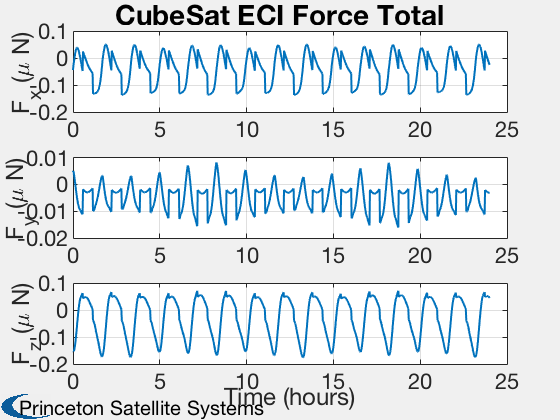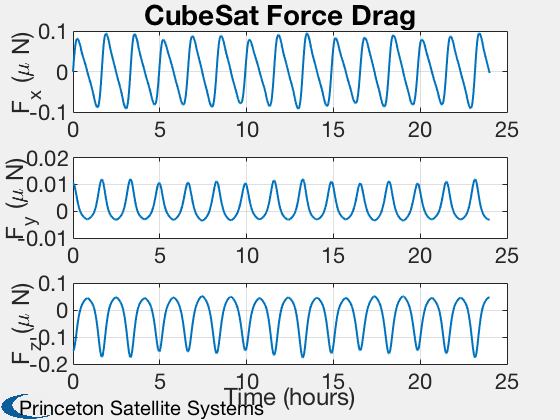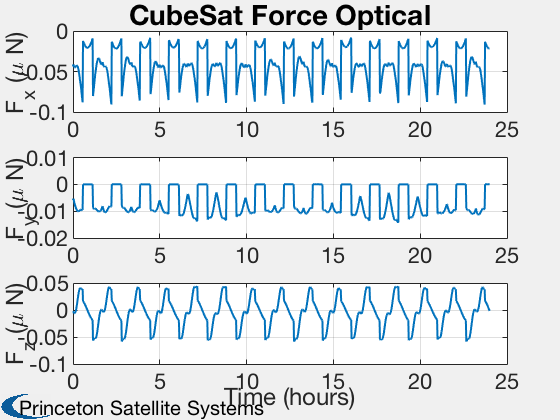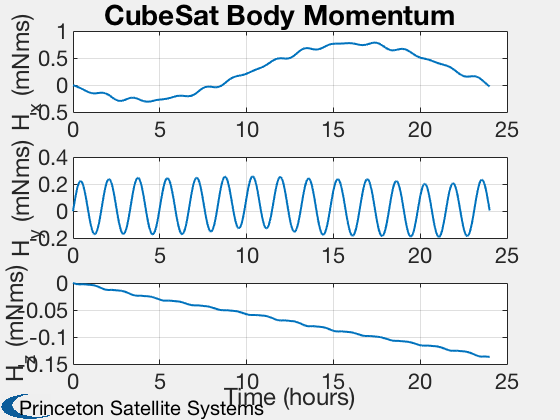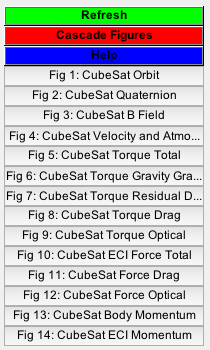Example CubeSat disturbance analysis
Demonstrate how to use CubeSatDisturbanceAnalysis to calculate disturbances over an orbit. The spacecraft is nadir-pointing along a LEO orbit. Some surfaces are given solar cell optical properties and some radiator properties.
See also QLVLH, CubeSatDisturbanceAnalysis, RHSCubeSat, Period, RVFromKepler, OpticalSurfaceProperties, Figui, AU2Q, QMult, Date2JD
%-------------------------------------------------------------------------- % Copyright (c) 2017 Princeton Satellite Systems, Inc. % All rights reserved. % Since version 2017 %-------------------------------------------------------------------------- % CubeSat model - default in RHS. % This is a 1U with body-mounted solar panels on +/` x faces. d = RHSCubeSat; % Introduce some CM offset (m) d.surfData.cM = [0.02;0.02;0]; % Initialize a polar LEO orbit t = linspace(0,24,1000)*3600; el = [7100 pi/2 0 0 0 0]; [r, v] = RVFromKepler( el, t ); % LVLH - align z axis with nadir q = QLVLH( r, v ); % Introduce some quaternion offset for more interesting results qDelta = AU2Q( 0.1*sin(t/Period(7100)), [1;1;1] ); for k = 1:length(t) q(:,k) = QMult(q(:,k),qDelta(:,k)); end % Epoch jD = Date2JD([2013 4 2 0 0 0]) + t/86400; % Differentiate the optical properties for solar cells and radiator panels solarOpt = OpticalSurfaceProperties('solar cell'); pSolar = [solarOpt.sigmaA;solarOpt.sigmaS;solarOpt.sigmaD]; radOpt = OpticalSurfaceProperties('radiator'); pRadiator = [radOpt.sigmaA;radOpt.sigmaS;radOpt.sigmaD]; d.surfData.sigma = [pSolar pSolar pRadiator pSolar pSolar pRadiator]; % Residual magnetic dipole (ATM^2) d.dipole = [0;0;0.01]; CubeSatDisturbanceAnalysis( d, q, r, v, jD ); Figui; %--------------------------------------
